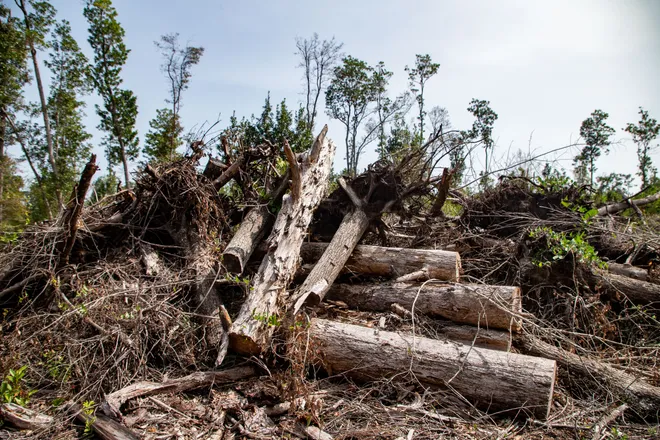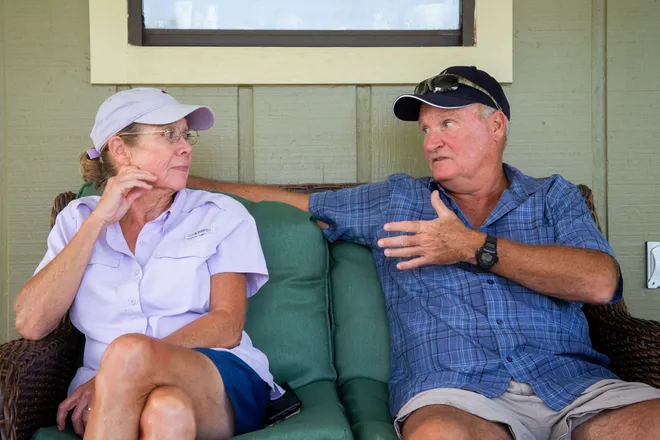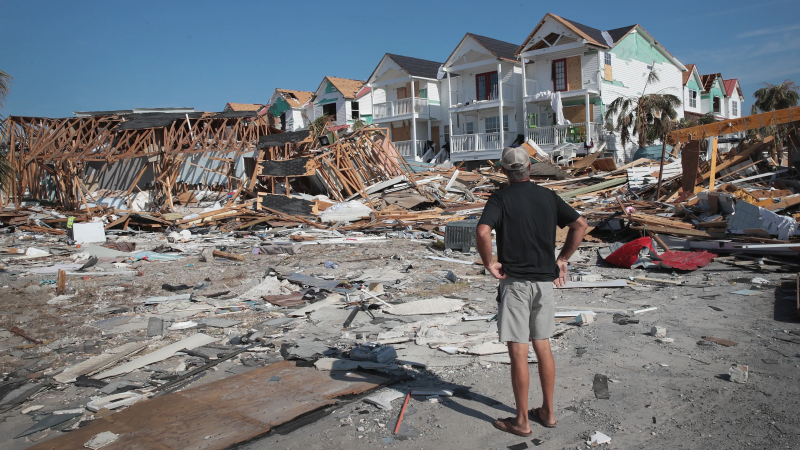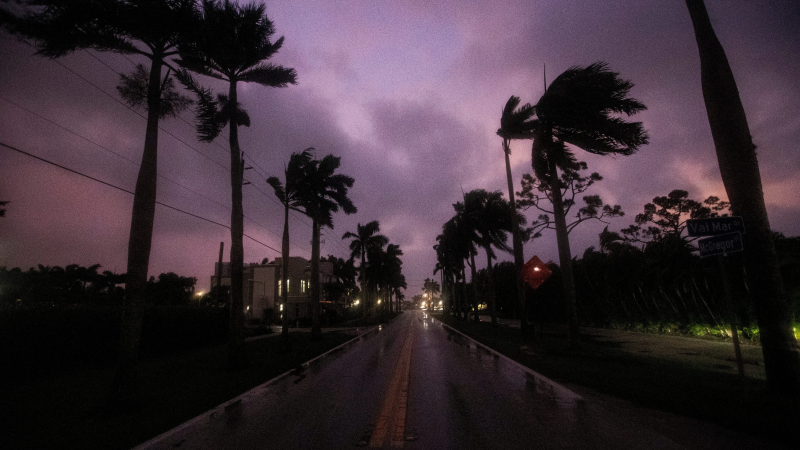Hurricane Milton hitting near the sixth anniversary of Hurricane Michael
Alicia Browne still gets a knot in her stomach when a big storm starts to barrel up the Gulf.
Six years ago, on Oct. 10, 2018, she and her husband, Jim Browne, along with his mother, rode out Hurricane Michael as it passed over their house near Clarksville, Florida, some 70 miles from the coast.
They survived, taking shelter under mattresses in their boarded-up residence. But their timber farm — along with countless others across the Florida Panhandle — was devastated. Michael leveled entire communities, dealing widespread destruction that Central Florida is bracing for from Hurricane Milton.
“If it is as bad as what we went through with Michael, I understand, it will be life-altering when you get back,” she said, referring to evacuees. “Because it won’t be the same.”
Hurricane Michael, with maximum winds of 160 mph, was the first Category 5 hurricane to make landfall in the Panhandle and only the second to hit Florida since Andrew struck Miami in 1992.

Hurricane Milton, feeding off record-warm Gulf waters, mushroomed from a tropical storm to a Category 5 hurricane in only 24 hours, the fastest in history. Its intensity has since fluctuated, and it could make landfall as a Category 3 or 4 near Sarasota.
Both Michael and Milton arrived around the peak of hurricane season, which runs from mid-September through mid-October. The climatological peak is Sept. 10, with a second peak in the middle of October, according to the National Weather Service.

Felicia Bowser, meteorologist in chief with NWS Tallahassee, said Milton was “sandwiched” between a low pressure cold front to the west and high pressure to the east that could see it make landfall between 10 p.m. and midnight and possibly into Thursday, the six-year anniversary of Michael.
“Almost to the day if not the day — it would definitely be a coincidence,” she said. “It would be the same date, but two different tracks, two different storms, two totally different impacts as a result to the state.”
Michael, which struck a more rural part of Florida, killed 50 people, wiped out timber, cotton and peanut farms and damaged or destroyed an estimated 60,000 homes, leaving behind rubble from Mexico Beach to Marianna. Timber losses alone topped $1.2 billion, with nearly 3 million acres damaged and 350,000 acres destroyed.

Browne said the hardest part in the immediate aftermath of Michael was “just the shock and awe of everything.”
“You’re kind of numb,” she said. “And it’s like, where do I start?”
For Browne, she began by cleaning up around their battered residence on their Fox Pen Farm, where Michael took out roughly 120 acres of upland forest. She got a contractor’s bag and started picking up pieces of insulation and roofing nails, slowly working her way out. The Florida Forest Service spent four days helping them dig out.
“There were some days where it just go so overwhelming (for) Jim and I,” she said. “There was one day where all we could do was sit down in our torn-up carport and sort through an old box of screws.”
Browne said people are still suffering from post-traumatic stress syndrome from Hurricane Michael, not to mention Helene, another major hurricane that hit the Taylor County coast Sept. 26, which happens to be both of the Brownes’ birthday.

“Living through Michael has just changed our life forever,” she said. “We were just trying to think of how to put it other than it has just changed our perspective on things — like saving your life.”
She said she urged an acquaintance in Tampa to learn from her family’s experience and flee before landfall. When Helene, which was forecast to hit farther west, was approaching, the Brownes had their go bags ready and their Ford F-450 gassed up, with an extra fuel tank in the back.
“If we had to go, and there was no place to stay, then we’d just keep going,” she said.
'You can come back, and you can rebuild'
Browne said said she empathizes with her neighbors to the south, who, like those affected by Michael, could see a recovery that last years.
“I think eventually it does get better,” Browne said. “You start to adapt to a new normal because our landscape will never be what it was in our lifetime.”
Ali Wiggins, a former longtime Marianna resident who lived through Michael, chronicled the hurricane in the Democrat, writing about the human suffering that lingered long after landfall.
“What happened after was almost as bad as the storm,” said Wiggins, who is retired from the pharmacy industry and now resides in Oklahoma.
Wiggins offered practical advice for victims of Milton, from getting electricians to hook up generators — it’s cheap and can prevent house fires — to making sure repair people are licensed contractors. She urged people to be sensitive to the mental health struggles of neighbors.
“There were suicides from depression after that,” she said. “Talk to people, because there’s somebody going through what you’re going through. But you can come back, and you can rebuild.”
Contact Jeff Burlew at jburlew@tallahassee.com.
Disclaimer: The copyright of this article belongs to the original author. Reposting this article is solely for the purpose of information dissemination and does not constitute any investment advice. If there is any infringement, please contact us immediately. We will make corrections or deletions as necessary. Thank you.






